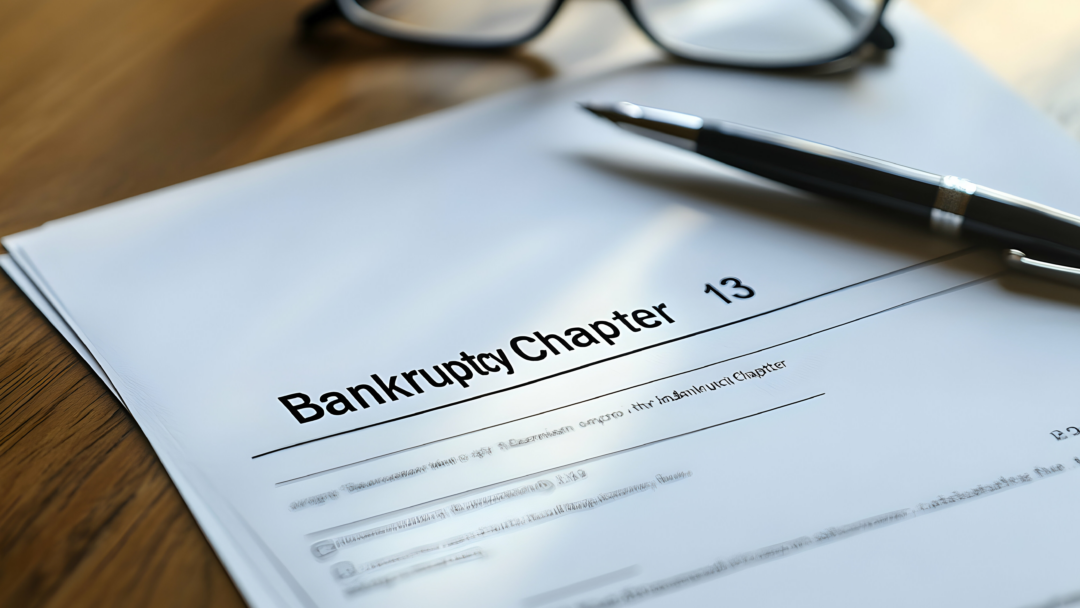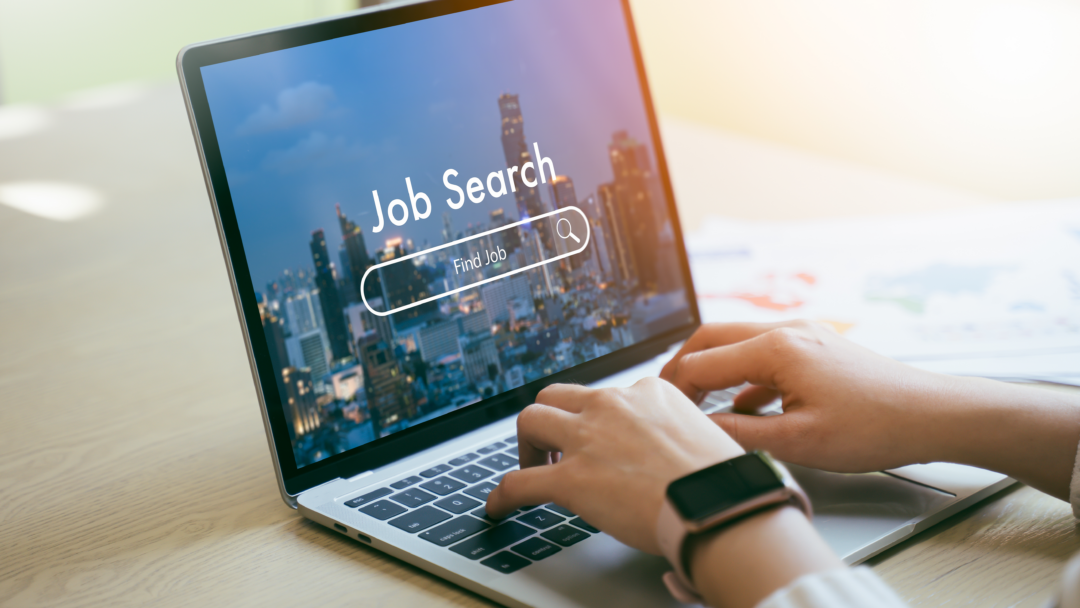Personal Loan Debt Relief
- Common Uses: Personal loans are used for debt consolidation, emergencies, or large purchases.
- Debt Consolidation: Helps combine high-interest debts into one lower payment.
- Key Factors: Consider total costs, affordability, and necessity before borrowing.
- Requirements: Credit score, income, and sometimes collateral are needed to qualify.
- Extra Costs: Fees and interest rates vary, impacting loan affordability.
When life throws unexpected expenses your way, relying on personal loan debt relief is sometimes the only way to get through the financial challenges. While this can be a short-term solution, other factors should be considered including the ongoing impact of interest costs and other expenses.
There are many types of options that fall under personal loan debt relief. This guide will help you make the decision that is right for the amount you owe, credit score, short-term and long-term goals. These type of loans are usually unsecured, which means they don’t require collateral like a house or a car.
Free Consultation with a Certified Debt Specialist
Start with a Free No-Obligation Consultation
When life throws unexpected expenses your way, relying on personal loan debt relief is sometimes the only way to get through the financial challenges. While this can be a short-term solution, other factors should be considered including the ongoing impact of interest costs and other expenses.
There are many types of options that fall under personal loan debt relief. This guide will help you make the decision that is right for the amount you owe, credit score, short-term and long-term goals. These type of loans are usually unsecured, which means they don’t require collateral like a house or a car.

Start Paying off Your Personal Loan Debt Today!
Personal Loan Stats
Americans owe $246 billion
The average balance is $11,687
5 in 10 borrowers use to consolidate debt
The Lowdown On Personal Loans
Personal loan debt can be used for just about anything. Some lenders may ask what you are using the money for, but others will just want to ensure you are a good candidate to pay back the loan. Lenders rely on an applicant’s creditworthiness, income, and level of debt to qualify them and determine the loan amount and annual percentage rate. Let’s start with the basics:
Key terms to know about personal loan debt:
- Annual percentage fee (APR)
- Origination fee:
- Debt-to-income ratio:
- Soft credit check:
Annual percentage rate is the interest rate on your loan plus all fees, calculated on an annual basis and expressed as a percentage. Use the APR to compare loan costs from multiple lenders.
An origination fee is a one-time, upfront fee that some lenders charge for processing a loan. It can range from 1% to 10% of the loan amount, and lenders typically deduct it from your funds before you receive them.
The debt-to-income ratio (DTI) divides your total monthly debt payments by your gross monthly income, giving you a percentage. Lenders use DTI — along with credit history and other factors — to evaluate a borrower’s financial ability to repay a loan.
Lenders that offer pre-qualification typically do so using a soft credit check, which allows them to see the rates and terms you would qualify for. This does not affect your credit score. But if you accept the loan offer, the lender will perform a hard check to confirm your information—which will knock off a few points.
Who Gets Personal Loans
Baby boomers currently have the highest average amount of personal loan debt, but Millennials and Generation Z are catching up, according to a 2022 report from Experian.
Here is how much average personal loan debt each generation has, according to the credit bureau’s report:
- Generation Z (18 – 24): $6,658.
- Millennials (25 – 40): $13,418.
- Generation X (41 – 56): $18,922.
- Baby boomers (57 – 75): $20,370.
Why Do People Rely On Personal Loan Debt Relief
Salaries aren’t keeping up with inflation. So, it makes sense that more and more Americans are turning to personal loan debt relief to fund their financial needs. Here are some of the most common reasons:
- Debt consolidation
- This type of debt relief is the most common reason consumers with excellent credit take out a personal loan. When debt piles up, keeping or catching up with your bills can become an uphill battle. Maxed out credit cards or cards with high balances need to be paid immediately, before they get completely out of hand. Consumers in this situation often turn to a personal loan for debt consolidation.
When you take out this type of loan, you can use the funds to repay your high-interest credit card debt. The balances are then consolidated into a new, single loan with lower monthly payments and a reduced interest rate.
A personal loan for debt consolidation could help you:
- Extend your repayment term
- Save money with a lower interest rate
- Lower your monthly payments
Many personal loans are unsecured, which means no collateral is needed to guarantee it. Your interest rate will be based on your credit score, income, and other financial details. It is usually higher than that for a secured loan because the lender takes on more risk if the loan isn’t backed by collateral.
To avoid further debt, it is essential to work with an experienced debt relief company. They can help you pay off your debt and shape better spending habits moving forward.
- Fund emergencies
- 24% of consumers have no savings in case of emergency
- 39% of consumers have less than a month of income retained for emergencies
- Only 37% of consumers have at least a month of income set aside to cover emergencies
Emergency loans come with sky-high interest rates, which makes them challenging to pay off. There is good news if you have a strong credit score: you will be charged the most favorable interest rate.
It is better to prepare for emergencies ahead of time than play catch up. A rule of thumb is to have an emergency fund that covers at least three to six months’ worth of expenses. Then if the unexpected happens like an auto repair or a large medical bill, you have the means to cover it. But if you haven’t saved and you find yourself in the lurch, an emergency personal loan can save the day.
In 2022, the Consumer Financial Protection Bureau conducted a survey with consumers and found:
- Home improvement projects
Have a kitchen that is barely holding up or plumbing from the 60s? When it is time for a home makeover, you could take out a personal loan if you are short on cash. Updating your home works in your favor when it is time to sell because buyers build condition and upgrades into their offer price.
- Cover the cost of a funeral
The median cost of a funeral with a viewing and burial was $7,849 in 2021, according to the National Funeral Directors Association. If you don’t have that kind of cash lying around, how will you cover the expenses?
Personal loan debt could be your savior. You can also take care of the expenses upfront with a prepaid funeral or a life insurance or final expense plan.
- Pay for moving costs
The national average cost of moving is about $1,400. This price range is for a 2-person team working on a local move of 100 miles or less. For long-distance moves, the average cost jumps to between $2,200 and $5,700. Personal loan debt relief offers a simple way to cover your moving expenses.
Once you qualify for a personal loan, you can use it to hire movers, rent a moving truck, pay a security deposit, furnish your new home, cover other moving and living expenses, and more.
- Make a large purchase
When it is time to finance a big-ticket item, taking on personal loan debt is often the best solution for funding. Large purchases can include everything from a car to buying a house. Families don’t always have the cash on hand to pay in full. A personal loan provides a simple solution to cover these purchases and pay them off at a lower interest rate.
There are some caveats. If you are borrowing money to buy the latest phone upgrade or a larger-than-life TV, you might want to think twice. If you are going into debt for something you can live without, it is considered bad debt. Live without it.
- Finance a Milestone
Significant life events are something to celebrate, especially when you worked so hard to achieve them. But they can be costly, and no one wants to scrimp on expenses when it is time to pay for a wedding or purchase your first home. Relying on personal loan debt relief can help you pay for big-ticket items and enjoy your accomplishment in style.
- Too Many Loans
A small loan here or there might not seem like a big deal. But when the monthly payments start to add up, keeping up with the ever-increasing debts becomes an issue. At this point, you might find yourself making minimum payments rather than trying to accelerate paying off the debt. This method greatly increases the amount you will pay in the end when you consider the additional interest.
If you are like many consumers, you might turn to personal loan debt relief for help. But be careful because tacking loan on top of loan can become a never-ending cycle.
Qualifications for a personal loan
Personal loan requirements vary by lender, but there are a few constants like your credit score and income. Before you start shopping for a loan, confirm you meet the basic qualifications and that you have the proper documentation needed to apply. Being prepared can improve your chances of qualifying and decrease your level of stress.
If you meet these requirements, there is a good chance you will qualify for a personal loan:
- Credit Score and History:
- Income:
- Debt-to-income Ratio:
- Collateral:
- Origination Fee:
Your credit score is one of the most important factors a lender considers. Credit scores range from 300 to 850 and are based on factors like payment history, amount of outstanding debt and length of credit history. Many lenders require a minimum score of around 600.
Income requirements vary by lender. Some require a minimum yearly salary of $45,000/year, while others will accept a figure as low as $20,000. Evidence of income may include recent tax returns, monthly bank statements, pay stubs and signed letters from employers. Self-employed applicants can provide tax returns or bank deposits.
This is expressed as a percentage and represents the portion of a borrower’s gross monthly income that goes toward their monthly debt. Lenders use the ratio to determine if you are a good candidate to pay back the loan. A ratio less than 36% is considered ideal, though some lenders will approve a highly qualified applicant with a ratio up to 50%.
If you apply for a secured personal loan, you will need to pledge a valuable asset as collateral. If your loan is for a home or a vehicle, the collateral is typically the product you are purchasing. However, secured personal loans can also be collateralized by other valuable assets, including cash accounts, investment accounts, and real estate. If you fall behind on your payments or default on your loan, the lender can repossess the collateral to recoup the remaining loan balance.
Many lenders charge personal loan origination fees to cover the costs of processing applications, running credit checks, and closing. They usually range between 1% and 8% of the total loan amount, depending on factors like credit score. Some lenders collect origination fees as cash at closing. Others build them into the loan amount or subtract them from the total amount at closing.
How To Decide If A Personal Loan Is Right For You
Before you take out a personal loan, ask yourself this:
- Why do you need the loan?
- What is the cost of borrowing the money?
- Can you handle more debt?
- Can you afford the monthly payments?
Personal loan debt should only be used for the essentials. You can justify a personal loan when it costs less than other forms of credit and when you can comfortably afford the monthly payments. But while you might be tempted to replace your perfectly running car or upgrade to a larger place when you don’t really need the space, don’t do it. If you can make do without the loan, don’t dig yourself into a hole.
The total cost of borrowing includes the interest rate and fees. Add everything up to make an informed decision. Compare a few personal loans and different types of loans to ensure you are getting the most bang for your buck.
If you are already weighed down with debt or struggling to keep up with your expenses, a personal loan could make matters worse. You might want to consider other options or utilize government assistance programs if you don’t see any other way out.
If your budget doesn’t have wiggle room to repay the personal loan debt, you could end up in default. In that circumstance, your original debt will be the least of your worries. Calculate your monthly payment—don’t forget the fees and interest— and see if you can handle them.
According to our 2022 survey:
4 out of 5 consumers who contacted NDR said they are experiencing debt related stress, with lost sleep being the most common issue
4 out of 10reported conflict in relationships, saying no to social events and delaying life events
Less than 10%said they are not expecting at least one of these things
3 out of 4were struggling to afford basics such as rent and utilities
Is your debt making it difficult to afford things?
The Basics
75%
Extras
56%
When Is A Personal Loan A Good Idea?
You can use personal loan debt to cover just about anything. What makes it popular is its simple and quick approval process. If you have good credit and the lender feels your income information makes you an acceptable risk, you can often receive the funds within a week. In many cases, you won’t have to wait more than 24 hours.
Here are a few examples of when taking out a personal loan will work in your favor:
- Consolidate credit card debt
- Pay Off Other High-Interest Debts
- Finance a Home Improvement or Big Purchase
- Finance a Major Life Event
If your high-interest credit card debt is weighing you down, relying on personal loan debt relief to pay it off could save you money. For example, the average interest rate on a credit card is currently 19.20% while the average personal loan interest rate is 11.08%. But remember that your rate could be higher or lower, based on financial circumstances like your credit score. Lowering the interest rate through consolidation can help you pay down your debt faster and save money.
If you currently have a personal loan with a higher interest rate than you would qualify for today, replacing it with a new loan is a smart strategy. But before you do, check if there is a prepayment penalty on the current loan or application or origination fees on the new loan. These fees can make it worthwhile to stick with the loan you have, despite its higher interest rate.
Taking out a personal loan could be cheaper for large purchases than financing through the seller or charging the bill to a credit card. When you borrow money from a retailer, they pad their loans with additional fees. And credit cards are notorious for their exorbitant rates.
Credit cards come with some of the highest rates around. If you are looking to finance an expensive event, such as a wedding, you would probably pay less with a personal loan. It is important to reinforce that rates for personal loans hinge on your credit score. As always, consider your options before you borrow.
When Is A Personal Loan Not A Good Idea?
According to MoneyControl, the following are situations when a personal loan should be avoided given its high interest rates and high repayments:
- College tuition:
- Interest rates, especially on government-backed student loans, tend to be lower than those on personal loans.
- Student loans typically don’t require a first payment until sometime after the borrower has completed their studies. On the other hand, a personal loan’s repayment typically begins one month after the loan is issued.
- While most personal loans are issued for any reason, some lenders restrict them for college expenses.
- Purchasing a car:
- Funding a vacation:
Student loans make more sense than personal loans for financing college education:
Auto loan interest rates are typically lower than those on personal loans because it is secured debt, which means the vehicle serves as collateral on the loan. If you default or run late on payments, the lender can repossess your car in lieu of the funds.
Everyone can use a vacation every now and then. And if it is for a once-in-a-lifetime event such as a honeymoon, you might have a good case for taking out a personal loan. It also makes sense if your trip is for an emergency and you need the funds immediately, or you have good credit and the means to pay back the loan. But most experts agree it is best to pay for regular vacations by setting aside household funds, whenever possible.
How to Choose A Personal Loan
If you are in the market for a personal loan, it is important to shop around with several lenders to find the best terms. Here are some important factors to keep in mind:
- Interest Rates:
- Time for Funding:
- Repayment Terms:
- Penalties and Fees:
- Qualification Requirements:
Shopping for a personal loan with the lowest rate might seem like a no-brainer. But it is important because by paying the least amount of interest, you can save a significant amount of money for the duration of your loan.
In an emergency, time is of the essence. Ask the lender how long it will take to deposit money into your account—many offer same-day funding.
How much time do you need to pay back the loan? You can lower your monthly payments by choosing a long-term loan. With a short-term loan, you will pay higher monthly bills but pay it off in a shorter amount of time and save money on interest. Go over your financial situation before deciding which repayment term works best for you.
Consider all fees associated with the loan, such as a disbursement or late payment fee. This could take the loan from affordable to out of reach. Be aware that some lenders subtract the disbursement fee from your loan amount upfront. So, you might need to request a higher amount to make up for the difference.
Your credit score plays a big role in whether you are approved for an emergency personal loan and at what interest rate. Don’t be discouraged if you don’t fit the criteria for some emergency personal loans, there are plenty of other lenders out there.
Commonly Asked Questions
- Is a personal loan considered debt?
- Is it difficult to obtain a personal loan?
- What type of debt is a personal loan?
- What credit score do I need to get a personal loan?
- Do personal loans count against my credit?
- How fast can I get a personal loan?
- Is there a difference between debt consolidation and personal loan debt?
Yes. Any amount of money you borrow falls under the category of debt.
It is generally not hard to get a personal loan if you meet the lender’s requirements and aren’t insistent on obtaining the lowest interest rate. Choosing between a secured or unsecured loan can also affect your chances of qualifying since secured loans are easier to acquire. One thing that will work against you is if you lack any kind of income. The money you have coming in helps the lender determine if you are a good candidate to pay back the loan.
Personal loans are a type of installment debt that, unlike a credit card, deliver a lump sum payment of cash. Borrowers pay back that amount plus interest in monthly installments over the life of the loan.
Unsecured personal loans often require a credit score of 660+, and some require scores of 700+. So, people with a good credit score have the best chance of approval. Lenders generally run a credit check to determine how likely it is you will repay your loan. The higher your credit score, the more likely you are to make timely payments and qualify for a lower interest rate.
Those with fair credit—580 to 669—may get approved for a personal loan. But don’t count on getting the same low interest rate as someone with good or excellent credit.
A personal loan will cause a slight dip in your credit score in the short term but on-time payments can lift it right back up. The key is repaying the loan on time.
Taking out a personal loan from an online lender is typically faster than banks and credit unions. That is because you can get preapproved and submit required information through the lender’s website. After filling out an initial application form, you will be able to see what rates you qualify for as well as how much you can borrow within a few minutes.
From there the lenders will ask you to submit more personal information, such as your mailing address, Social Security number and government-issued ID. They will also pull your credit report to do a credit check. If you are approved, most online lenders will distribute loan funds as soon as the same business day, depending on the time of approval and how soon you verify your bank account information. It may take a few days for your bank to receive the funds.
A debt consolidation loan is a type of personal loan that is used to pay off several debts, which streamlines your monthly payments into one fixed amount. Both types of loans offer lower interest rates compared to credit cards.
If you are strapped for cash, personal loan debt relief is a solid option to cover your balances while you get your finances back in order. No matter what you need the funds for, a personal loan could be your best bet.
Did You Know?
Americans owe $178 billion in personal loan debt as of the first quarter of 2022, up from $144 billion a year earlier.
That’s a 24% year-over-year jump.
The average balance of a new personal loan is $6,656 as of the first quarter of 2022.
A year ago, the average personal loan balance was $5,155.
Nearly 6 in 10 borrowers (57.6%) take out a personal loan to consolidate debt or refinance credit cards.
The next-closest reason is home improvements (5.8%).
All You Need To Know
We’ve put all of our essential resources in one spot. Everything from debt resolution to taking control of your financial future . Need to talk? Our experts are here to help. Call us anytime for a free no-obligation consultation.
Get Help With Your Personal Loans
- Receive A Free Savings Estimate Today
- See How Quickly You Can Be Debt Free
- No Fees Until Your Accounts Are Settled
Essential Reading
The latest debt relief news, tips, and resources from our team.
We’ve transformed the lives of more than 500,000 people

“The anxiety is gone, I am credit card debt-free. And that right there, I never thought I would be able to say those words, and it just feels so good.”
Michelle saved 23% on her debt

Now I’m able to go on vacation for the first time in a long time- I was able to go and relax. I couldn’t do that before.

Now I wake up knowing that I am paying off my debt, it’s like a weight lifted off my chest and I can breathe a bit more.

“The anxiety is gone, I am credit card debt-free. And that right there, I never thought I would be able to say those words, and it just feels so good.”
Michelle saved 23% on her debt

Now I’m able to go on vacation for the first time in a long time- I was able to go and relax. I couldn’t do that before.

Now I wake up knowing that I am paying off my debt, it’s like a weight lifted off my chest and I can breathe a bit more.

“The anxiety is gone, I am credit card debt-free. And that right there, I never thought I would be able to say those words, and it just feels so good.”
Michelle saved 23% on her debt

Now I’m able to go on vacation for the first time in a long time- I was able to go and relax. I couldn’t do that before.







